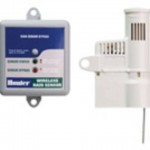Pool Inspection Reveals Shock Hazards and Other Defects
December 3, 2009


Sprinkler Systems Rain Sensor Requirements
February 13, 2010Can I Do-It-Myself?
Q: When purchasing a home, what are some of the most common problems you find? I really would like

to have the home I’m buying inspected, but money is the biggest problem right now, and we can’t afford to pay an inspector. If we do the inspection ourselves, what should we be looking for?
A: As a Certified Professional Inspector and a member of the Texas Association of Real Estate Inspectors and the American Society of Home Inspectors, my answer is that you cannot afford to simply pass on the home inspection because of your belief your budget will not allow for it. If you decide to do it yourself, you may not find the major defects that would be obvious to an experienced home inspector. It is sometimes those smaller finer details that go unnoticed by the untrained person that would have lead to larger and costly findings. Depending on where you live, a home inspection average costs is around $385, but the savings reaped from the inspection report is often in the thousands of dollars.
Your home inspection is often your last chance to ask the seller to correct the defects listed in the home inspection report. After taking possession of the home, the seller is out of the picture, even if you later discover you need a new furnace which may have been discovered during a professional inspection or repairs that were needed with the electrical system.
Our Company has performed over 35,000 home inspections. You might also consider that a Do-It-Yourself (DIY) inspection may not be accepted by the seller as an accurate description of what needs to be done. Hiring a professional home inspector, who can explain in plain language what the defects are without using scare tactics, leaves little room for disagreement. You should also consider that a professional home inspector is unbiased and is disconnected from the emotional issues associated with purchasing the home. The home inspector gets paid for his services whether or not you follow through with the purchase and repairs of the home.
If you are determined to do the inspection yourself, here are several things to look for:
- Grading and drainage. Make sure the home’s foundation sits high and dry. The yard and rain gutters should drain away from the foundation for at least 10 feet.
- Any and all electrical wiring should be either out of reach (6 feet 6 inches above the floor) or the wiring should be in a protective conduit.
- Metal flue pipes must have a 1-inch clearance to combustibles. There should be a clearance where the pipe passes through the drywall ceiling or through the wood-roof sheathing. The flue pipes must also have a continuous rise from the appliance to the main chimney connection. Rusted or damaged flues need to be replaced.
- Loose toilet bowls and stopped up sink drains. Operate all plumbing fixtures for 10 to 20 minutes to make sure all drain lines are working, and at the same time check for leaks under the fixture’s cabinets and in the basement or crawl space.
- Purchase an outlet circuit tester and check each and every outlet you can reach. You will be checking for “open grounds and reversed polarity” at the outlets. Test and reset every GFCI (ground fault circuit interrupter) in the home.
- Operate all appliances (furnace, dishwasher, range, etc. Do not operate an air conditioner when the outside temperature is below 60 F).
- Operate the garage-door opener and check the auto reverse features and the photo cells to make sure the door automatically opens if there is an obstruction in its path.
- Natural gas and LP gas pipes require a sediment trap, also known as a dirt trap or a drip leg, on each gas pipe just before the pipe connects to the gas appliance’s main gas valve. Replace any and all copper gas pipe.
- Stairways and handrails. Make sure all stair risers are the same height (seven to eight inches) and that stair treads are at least 9 to 10 inches deep. Where there are three or more steps, a handrail is required for safety. Longer handrails and guardrails also require baluster posts set at a minimum of four to six inches apart to keep children from slipping through the railings.
- Tempered safety glass. Windows over bathtubs, shower doors, patio and French doors and larger windows that are easily accessible should be tempered or protected against accidental human impact. The glass should be marked “tempered” in one corner of each piece of glass.
While these are just a portion of the components of the home, a professional home inspector will check many more details too numerous to list and has a trained eye to spot problems the DIY’er may not be able to identify.
If you have any question please feel free to email Brian Murphy at brian@a-action.com. He will not try to sell you, but just answer those troubling questions you might have or just want straight answers to.

